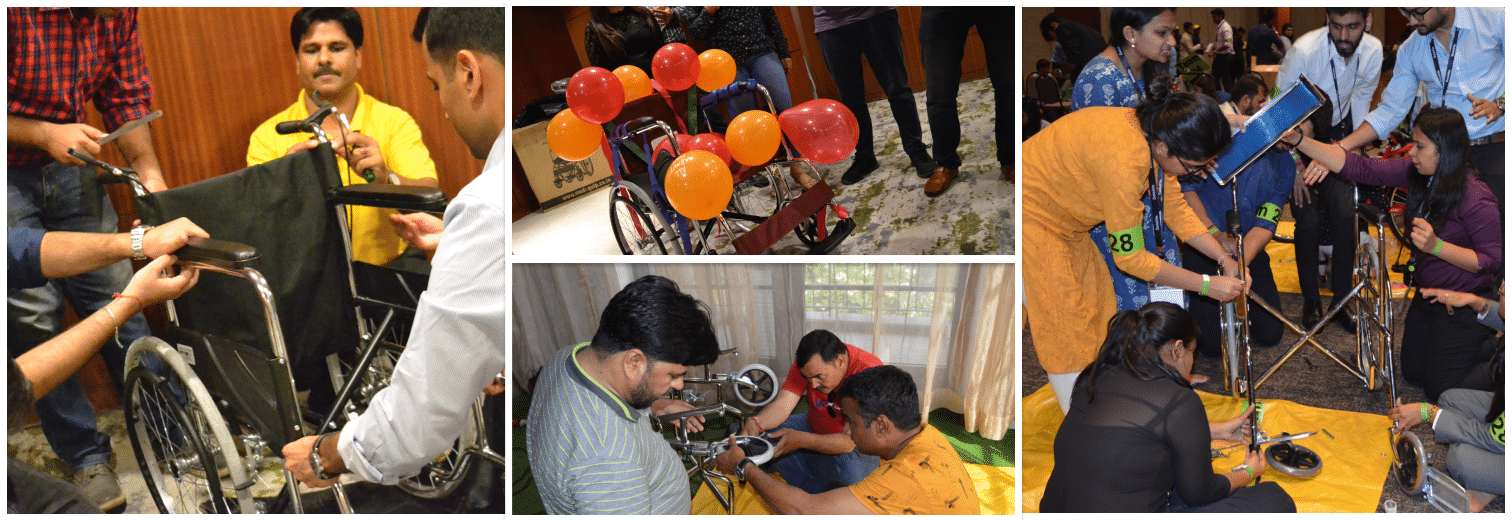In my previous blog post, I explored the fundamentals of building a strong team foundation. While establishing a solid base is essential, it’s just the beginning. Teams are comprised of unique individuals, each with their own motivations, emotions, and perspectives. This naturally adds complexity and raises a vital question. What exactly inspires teams to consistently achieve remarkable outcomes?
In seeking the answer, I recently came across a valuable resource, “The Orange Revolution” by Adrian Gostick and Chester Elton. Their research delves into how exceptional teams can positively influence an entire organization. According to the authors, there are six distinctive traits common to high-performing teams:
- An Inspiring Dream
- An Unshakeable Belief
- Calculated Risks
- Consistent Measurement
- Persistent Effort
- Effective Storytelling
Let’s explore each trait in detail and see how you can nurture these characteristics within your own teams.
1. An Inspiring Dream
Table of Contents
Every remarkable achievement begins with an inspiring dream. Think about Ratan Tata, who envisioned creating an affordable car for the middle class when he saw a family struggling on a two-wheeler during a rainstorm. This powerful dream ultimately led to the creation of the Tata Nano.
An inspiring vision pushes teams beyond their perceived limits. It provides direction, motivation, and purpose. JFK’s vision of landing on the moon and Martin Luther King’s famous speech “I have a dream” clearly illustrate how powerful dreams can ignite passion and action.
To cultivate an inspiring dream within your team, clarify your team’s vision and communicate it frequently. Make sure every member sees themselves contributing meaningfully to a bigger purpose.
2. An Unshakeable Belief
Belief is the driving force that turns dreams into reality. Henry Ford captured this beautifully when he said, “Whether you think you can or think you cannot, you are right.”
Consider Gandhi’s belief in nonviolence, which not only freed a nation but inspired global movements. Similarly, in the business world, Zappos transformed customer service standards through unwavering belief in their vision.
Creating an environment where teams have strong belief involves establishing trust and psychological safety. One way you can foster this within your organization is by exploring Building Psychological Safety within teams. When people feel safe, they’re more likely to believe in their shared goals.
3. Calculated Risks
To achieve extraordinary results, teams must embrace calculated risks. Risk-taking encourages innovation, creativity, and growth. Consider Bill Gates, who challenged the hardware-dominated market by selling software, or Intel, which boldly shifted from memory chips to microprocessors.
Encourage calculated risks within your team by promoting a culture that celebrates curiosity, initiative, and learning from failures. Equip your team to manage uncertainty effectively through structured experiences, such as our program on Taking Ownership, which builds confidence and accountability.
4. Consistent Measurement
“What gets measured gets done,” is a timeless adage that remains true. High-performing teams use clear metrics to track progress, maintain accountability, and ensure alignment with goals.
Regular measurement enables transparency, facilitates better decision-making, and helps celebrate small wins along the journey. By tracking performance openly, you build trust, foster a sense of ownership, and ensure everyone is pulling in the same direction.
Consider implementing regular check-ins to discuss metrics and progress, ensuring your team remains consistently aligned and focused.
5. Persistent Effort
Persistence is the hallmark of successful teams. Thomas Edison famously remarked after numerous attempts at creating the lightbulb, “I have not failed. I have just found 10,000 ways that will not work.” That kind of resilience defines high-performing teams.
Encouraging persistence involves reframing setbacks as opportunities to learn and improve. Create an environment where open communication and reflection on challenges is standard practice. Such transparency builds resilience and strengthens bonds within your team.
Help your team see obstacles as opportunities rather than threats, emphasizing continuous learning and growth.
6. Effective Storytelling
Stories have immense power to inspire and unite people. Great teams understand this and use storytelling regularly to reinforce culture, celebrate achievements, and illustrate desired behaviors.
Consider sharing stories regularly during meetings or town halls. These stories could highlight successful collaborations, lessons from past experiences, or inspiring customer interactions. Authentic stories help solidify team culture and foster a sense of shared purpose.
To help your team master the art of storytelling, explore our program on Influencing Through Stories, designed to enhance effective communication and team alignment.
Why These Traits Matter in Today’s Workplace
Today’s workplace is characterized by rapid change, constant challenges, and the need for collaboration. Teams with these six key traits are more equipped to navigate uncertainty, drive innovation, and consistently deliver high-impact results.
By nurturing these characteristics, you enable your team to become more adaptable, cohesive, and effective. In turn, this helps your organization stay agile and competitive.
Practical Steps for Fostering High-Performance Traits
Here’s a brief summary of practical steps you can immediately take:
- Clearly articulate your team’s inspiring vision and purpose.
- Cultivate trust and psychological safety to strengthen belief.
- Encourage calculated risk-taking, supporting creative solutions.
- Establish clear and consistent performance metrics.
- Promote persistence by viewing setbacks as learning opportunities.
- Regularly share meaningful stories to reinforce team values and goals.
Final Reflections
Building a high-performing team takes deliberate effort and attention to these six critical traits. By consistently focusing on these areas, your team will not only improve performance but also build deeper connections and greater resilience.
Reflect on your current practices and identify areas where you can better foster these characteristics. A small effort in cultivating these traits will yield significant returns in team engagement, productivity, and success.
I’d love to hear your experiences and insights. Which traits have you successfully implemented within your team, and which areas require more attention? Let’s continue this important conversation.





